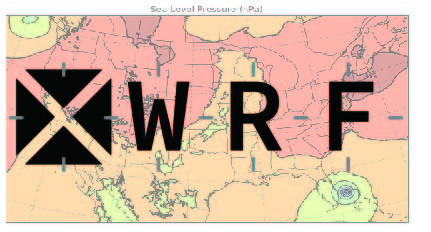引言:
- 如果想要研究非绝热加热过程对于涡旋生成发展传播过程中的影响,可以通过位涡(PV)方程来进行诊断。位涡方程相比于传统的EKE诊断方程的优势在于其不守恒性可以直接归因于非绝热加热过程(Hoskins et al., 1985)。
- 也就是说,PV方程中将非绝热加热这一项在方程单独分开,而不是像EKE方程那样将斜压项和非绝热加热项放在了同一个源项中,便于计算非绝热加热过程对于PV发展传播的贡献。
为什么要通过WRF输出非绝热加热项
一般的非绝热加热数据,需要通过WRF输出,原因如下两点:
- 现有的再分析资料中对于非绝热加热数据的缺失;
- 基于参数化计算的已有的非绝热加热资料不够准确 (Luo & Yanai, 1984)。
Q:How do I estimate the heating profile?
Answer:
- You need to add up RTHCUTEN (from cumulus), RTHRATEN (from radiation), RTHBLTEN (from PBL parameterization), RTHNDGDTEN (if nudging is applied), and H_DIABATIC (from microphysics).
- 也就是说,你要将
RTHCUTEN (from cumulus), RTHRATEN (from radiation), RTHBLTEN (from PBL parameterization), RTHNDGDTEN (if nudging is applied), and H_DIABATIC在WRF中先输出,然后将这几个变量相加,得到的就是总的非绝热加热率
这里简单表达为:
\(Q=Q_{\mathrm{microphysics}}+Q_{\mathrm{boundary _layer}}+Q_{\mathrm{radiation}}+Q_{\mathrm{cumulus}}\) 分别表示由云微物理过程、边界层通量交换、辐射过程和积云对流过程产生的非绝热加热过程。
对于多层嵌套网格,如果两层的话,使用d02需要去掉积云对流参数化过程的那一项,只使用前三项
[1] Luo, H., & Yanai, M. (1984). The Large-Scale Circulation and Heat Sources over the Tibetan Plateau and Surrounding Areas during the Early Summer of 1979. Part II: Heat and Moisture Budgets, Monthly Weather Review, 112(5), 966-989. [2] Hoskins, B. J., McIntyre, M., & Robertson, A. W. (1985). On the use and significance of isentropic potential vorticity maps. Quarterly Journal of the Royal Meteorological Society, 111(470), 877–946. https://forum.mmm.ucar.edu/threads/adding-diabatic-heating-rates-to-wrf-arw-real-outputs.5423/ https://forum.mmm.ucar.edu/threads/latent-heating-from-cumulus-parameterization.8797/ https://forum.mmm.ucar.edu/threads/microphysics-heating-tendency-and-relationship-with-cumulus-scheme.9738/#p19094
